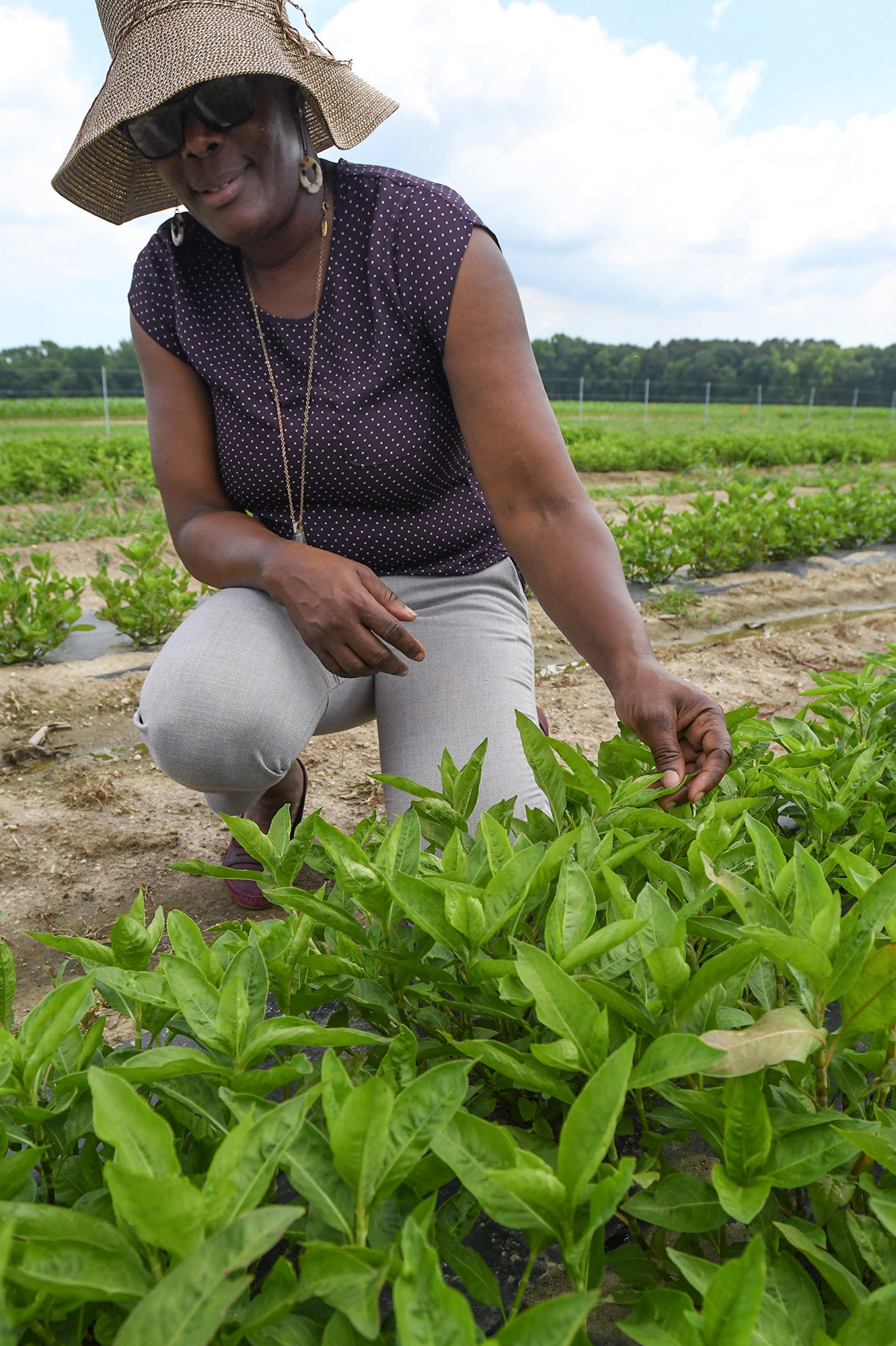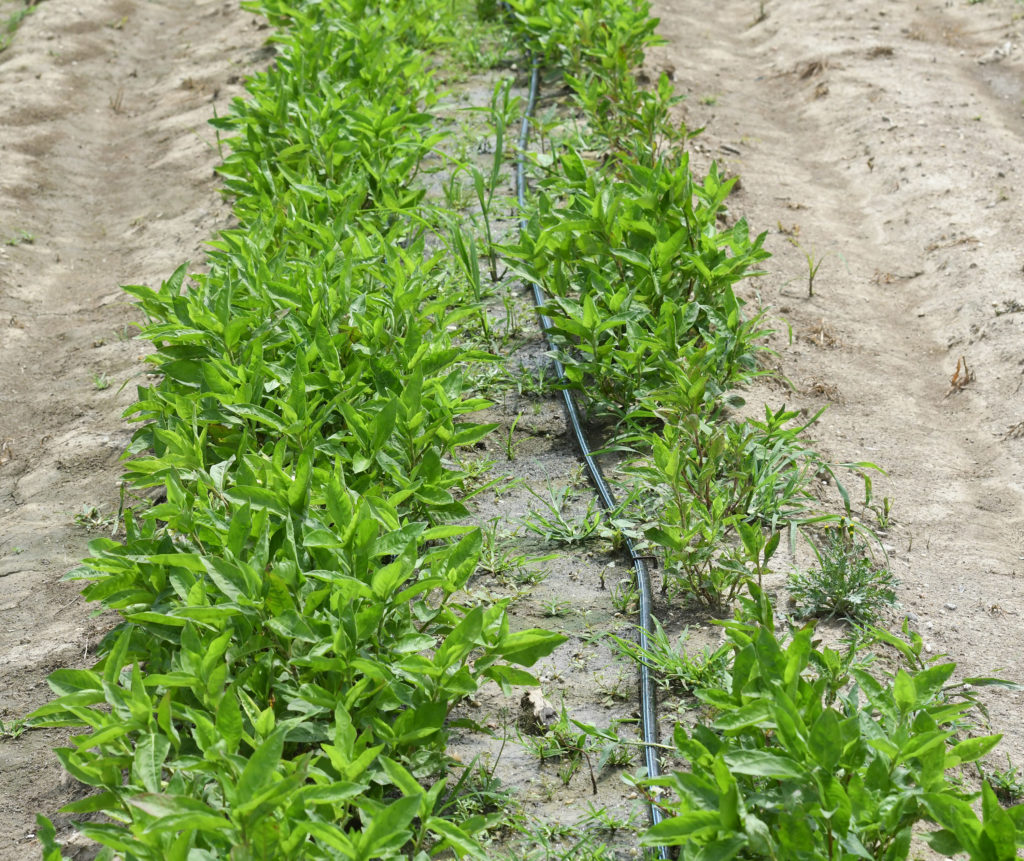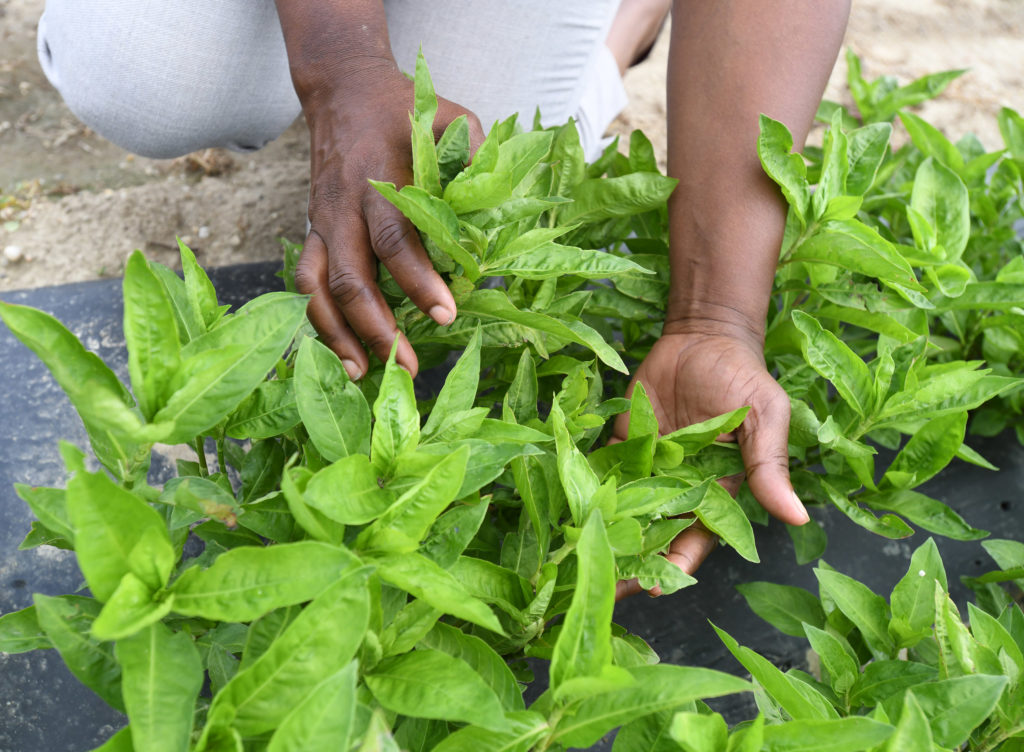
It’s always a learning experience filled with “wow” moments on a visit to UMES’ Research and Education Farm! On a recent trip down from campus, it was discovered that UMES Extension Alternative Crop Specialist Dr. Nadine Burton (at left) is trying her hand at growing indigo in an 8’x30’ plot as part of an experiment with the Maryland Institute College of Arts. Knowledge gained will be passed along to the group of farmers who she is currently working with that are growing the plant distinguished by the rich blue pigment obtained from its leaves for the production of natural dyes.
Burton is doing what she does best, responding to a need, cultivating several test varieties of a plant to see if it is viable in the area and determining if there is a market.
“MICA gave us two varieties of indigo, Asian and Japanese. We are conducting research on four production practices to determine the most economical way to grow and harvest this crop as well as to identify the best variety suited for this region,” Burton explained.
“We are using four planting methods of growing of which three were using transplants (plastic mulch, no mulch, and ground cover) and one direct planting (broadcasting),” she said. “So far, we found more plants can be grown using the ground cover compared to the other growing methods since it eliminates the 3′ spacing between rows and can grow closer together. Our test plot boasted 400 plants in just a 240’ space.”
Planted mid-May, the plants have been found to be fast growing and at one month were 1-1.5′ high. Burton will periodically walk the field to scout for flowering indicating the time to harvest which she predicts will be at around three months maturation. An interesting note, the shades of blue achieved from the leaves is dependent upon where it was grown and in what weather conditions.
“I’ll try three harvesting techniques; one-time cutting where the entire plant is harvested, multi-cutting using a mechanical vegetable cutter and hand picking the leaves multiple times to determine the most economically viable technique for harvesting.”
Why indigo? Burton hypothesizes “as the world gets more health conscious, the demand for more natural products increases, not just what we eat, but also what we wear. Textile companies are looking for more natural and environmentally friendly dyes.” The colonial crop once the most commonly used natural dye in the world until synthetic indigo was developed.
Indigo isn’t the only unique plant new to Burton’s loving care this year on the farm. She is also conducting research on two varieties of grain amaranth to determine the ease of growth and labor intensity, The grain is used by different cultural groups as a wheat or flour for its nutritional value and is used to fortify cereals.
Burton also works with other plants such as Aronia berries, hops, hemp and blueberries, some of which is done in collaboration with UMES researchers, along with her ethnic greens, vegetables and spices in the field and hoop houses. Look for more next issue!
Gail Stephens, agricultural communications and media associate, School of Agricultural and Natural Sciences, University of Maryland Eastern Shore, 410-621-3850 gcstephens@umes.edu.
Photos by Todd Dudek, agricultural communications photographer/videographer, School of Agricultural and Natural Sciences, University of Maryland Eastern Shore, tdudek@umes.edu




